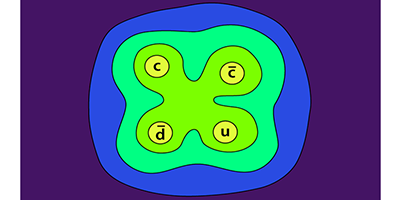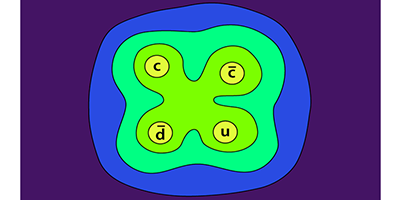Catching Z’s in Particle Colliders
In April 2013, particle physicists made an unexpected discovery: a particle, called Zc(3900), that appears to be composed of four quarks rather than the usual two or three. The BESIII Collaboration—one of the two groups to first spot Zc(3900)—has now explored a separate set of reactions that may lead to the production of these four-quark states. As reported in Physical Review Letters, they do find strong signatures of a particle, but its mass isn’t exactly that of Zc(3900). Regardless of its true identity, the detected entity may give a better understanding of how four quarks might bind together in these unusual particles.
The original evidence for the Zc(3900) particle comes from electron-positron collisions. At an energy of 4.26 giga-electron-volts (GeV), these collisions can produce a particle called Y(4260), which decays some of the time into a J/Ψ meson and two pions. In these decay chains, physicists uncovered evidence of another particle, the Zc(3900), with a mass of 3.9GeV/c2. It is still unclear whether Zc(3900) is a true four-quark state or a “molecule” composed of two two-quark states.
Looking for new insight into this problem, the BESIII experiment at the Beijing Electron Positron Collider has analyzed a different decay route for Y(4260), which results in a pair of D mesons and one pion. The data showed a peak at a specific energy, implying a particle with a mass of 3.885GeV/c2 was created. The mass discrepancy with the Zc(3900) is small but significant (2 sigma), so the researchers refrain from identifying their particle as Zc(3900). However, they did measure the total angular momentum and parity of their particle, which could help discriminate this particle from other potential four-quark particles in the same mass range. – Michael Schirber





